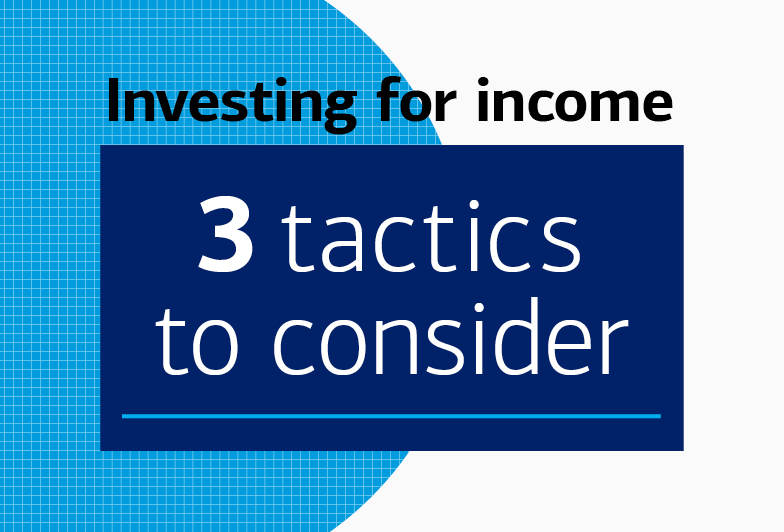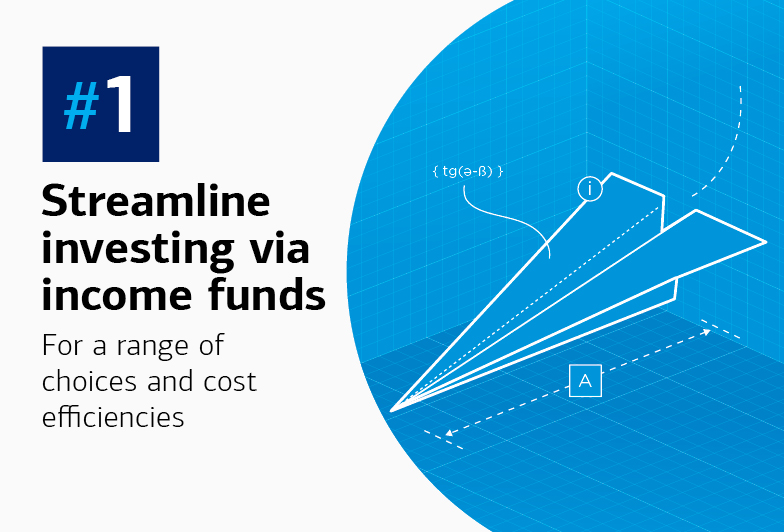
These strategies can help you create a steady stream of income for retirement, reinvestment or other financial goals
“This is an unambiguously better time for finding sources of steady income.”
GROWTH IS USUALLY THE MAIN POINT of an investing strategy. But depending on your goals, income-producing investments may be equally if not more important. From supplementing retirement spending and funding a second home purchase to helping to pay for a child’s or grandchild’s college and more, a portfolio that produces a steady stream of cash can be life-changing.
But putting the strategies in place to pursue that income takes thoughtful, dedicated planning. “Investing for income requires you to think differently about your assets, especially in volatile interest-rate environments,” says Matthew Diczok, head of fixed income strategy in the Chief Investment Office for Merrill and Bank of America Private Bank. Both dividend-paying stocks and bonds play a role.
By offering regular payments to shareholders, dividend-paying stocks can be a source of steady cash.1 Share prices may rise or fall depending on the company’s health and outlook, but these stocks have the potential to gain value while paying reliable dividends, especially in today’s market, Diczok notes. “If, as expected, the market becomes less concentrated in just a few stocks, high-quality dividend stocks could benefit,” he says.
As for bonds, when you’re looking for income, what happens to prices may be less important than the interest they pay, Diczok notes. “The first and most important thing bonds provide is regular, high-quality income,” he says. And with the current interest-rate environment normalizing after prolonged volatility, anyone looking for investment income should consider taking advantage of today’s rates. “Now, taking very limited risk, you could potentially earn more than 5% on high-quality fixed income,” Diczok says. “And you could potentially earn two to three percentage points above inflation for multiple years. This is an unambiguously better time for finding sources of steady income.” (For more on the role bonds can play in your portfolio, watch the video above.)
Below are three tactics to consider when you want to supplement your cash flow with income-paying investments. Not every strategy may be right for your particular situation. In fact, for many people, a combination of approaches may work best.




1. Streamline your income investing via mutual funds and exchange-traded funds (ETFs). For the average investor, “the most cost-efficient way to build a fixed income or dividend-paying portfolio may be through ETFs and mutual funds,” says Diczok. “These funds can give you diversified access to a range of securities and cut down on transaction costs.” Compared with owning a relative handful of individual bonds, for instance, a typical bond market ETF may offer thousands of bonds, providing very broad diversification. And with bond mutual funds, you get the advantage of fund managers who factor in various kinds of risk when selecting their holdings, Diczok says. (See chart below to learn about the many flavors of bonds available.)
Different types of bonds offer varying degrees of risk and potential income.
Investment-grade corporate bonds
These types of bonds are issued by private companies with high credit ratings. Their prices are generally less volatile than the stock market.
Treasury bonds
Issued and backed by the U.S. government, these are among the safest income-generating investments. However, rates are usually one or two percentage points below those provided by high-quality corporate bonds of the same maturity.
Municipal bonds
Issued by state and local governments, muni bonds generate income that is usually exempt from federal income taxes and may also not be subject to state and local taxes. The trade-off is a relatively modest rate of return. It can be helpful to compare the after-tax return of other bonds with the interest from municipals.
High-yield bonds
These bonds generally offer higher interest rates than investment-grade corporate bonds but are considered more volatile, with prices fluctuating more than those of other bonds, and sometimes as much as stocks.
2. Build a bond ladder. While bond ETFs and mutual funds may be the most convenient and cost-effective way to add fixed income to your portfolio, another approach to consider is building a “bond ladder” by purchasing bonds of varying maturities, and as Diczok notes, it can work in any type of interest-rate environment. You can create a ladder by investing in a mix of bonds with short, medium and long durations. “Most income investors want regular, reliable payments, which means owning a range of different maturities,” says Diczok. Doing so gives you predictable payments and the option to reinvest at current market rates as each bond matures. Plus, laddering helps to increase liquidity, says Diczok. The shorter-term bonds you purchase will offer access to cash as they mature, should you need it to supplement your income sooner rather than later.
3. Focus on your overall returns rather than short-term market movements. When you’re deriving the income you need from an investment, it doesn’t matter as much if the value of the underlying asset fluctuates, regardless of whether it’s a stock or a bond. “If you’re still receiving regular income and there is no fundamental change in the borrower’s creditworthiness, there’s less reason to panic if the market value of your investment goes down somewhat,” says Diczok, “especially if it’s a bond you plan to hold till maturity.”
Whatever your approach, he adds, “make sure that your portfolio includes a range of income sources that are appropriate for your goals, timelines and risk tolerance.”
Work one-on-one with a Merrill advisor for more insights and personalized guidance. Connect with us today.
1 Dividend payments are not guaranteed and are paid only when declared by an issuer’s board of directors. The amount of a dividend payment, if any, can vary over time.
Opinions are as of 09/10/2025 and are subject to change.
Investing involves risk, including possible loss of principal. Past performance is no guarantee of future results.
This information should not be construed as investment advice and is subject to change. It is provided for informational purposes only and is not intended to be either a specific offer by Bank of America, Merrill or any affiliate to sell or provide, or a specific invitation for a consumer to apply for, any particular retail financial product or service that may be available.
The Chief Investment Office (CIO) provides thought leadership on wealth management, investment strategy and global markets; portfolio management solutions; due diligence; and solutions oversight and data analytics. CIO viewpoints are developed for Bank of America Private Bank, a division of Bank of America, N.A., (“Bank of America”) and Merrill Lynch, Pierce, Fenner & Smith Incorporated (“MLPF&S” or “Merrill”), a registered broker-dealer, registered investment adviser and a wholly owned subsidiary of Bank of America Corporation (“BofA Corp.”).
Investments have varying degrees of risk. Some of the risks involved with equity securities include the possibility that the value of the stocks may fluctuate in response to events specific to the companies or markets, as well as economic, political or social events in the U.S. or abroad. Bonds are subject to interest rate, inflation and credit risks. Treasury bills are less volatile than longer-term fixed income securities and are guaranteed as to timely payment of principal and interest by the U.S. government. Investments in foreign securities (including ADRs) involve special risks, including foreign currency risk and the possibility of substantial volatility due to adverse political, economic or other developments. These risks are magnified for investments made in emerging markets. Investments in a certain industry or sector may pose additional risk due to lack of diversification and sector concentration.
Diversification does not ensure a profit or protect against loss in declining markets.
Investing in fixed-income securities may involve certain risks, including the credit quality of individual issuers, possible prepayments, market or economic developments and yields and share price fluctuations due to changes in interest rates. When interest rates go up, bond prices typically drop, and vice versa.
Investments in high-yield bonds (sometimes referred to as “junk bonds”) offer the potential for high current income and attractive total return but involve certain risks. Changes in economic conditions or other circumstances may adversely affect a junk bond issuer’s ability to make principal and interest payments.
Income from investing in municipal bonds is generally exempt from federal and state taxes for residents of the issuing state. While the interest income is generally tax-exempt, any capital gains distributed are taxable to the investor. Income for some investors may be subject to the federal alternative minimum tax (AMT).
Investments focused in a certain industry may pose additional risks due to lack of diversification, industry volatility, economic turmoil, susceptibility to economic, political or regulatory risks, and other sector concentration risks.
Merrill, its affiliates, and advisors do not provide legal, tax, or accounting advice. You should consult your legal and/or tax advisor before making any financial decisions.
Timely insights to stay ahead of the curve